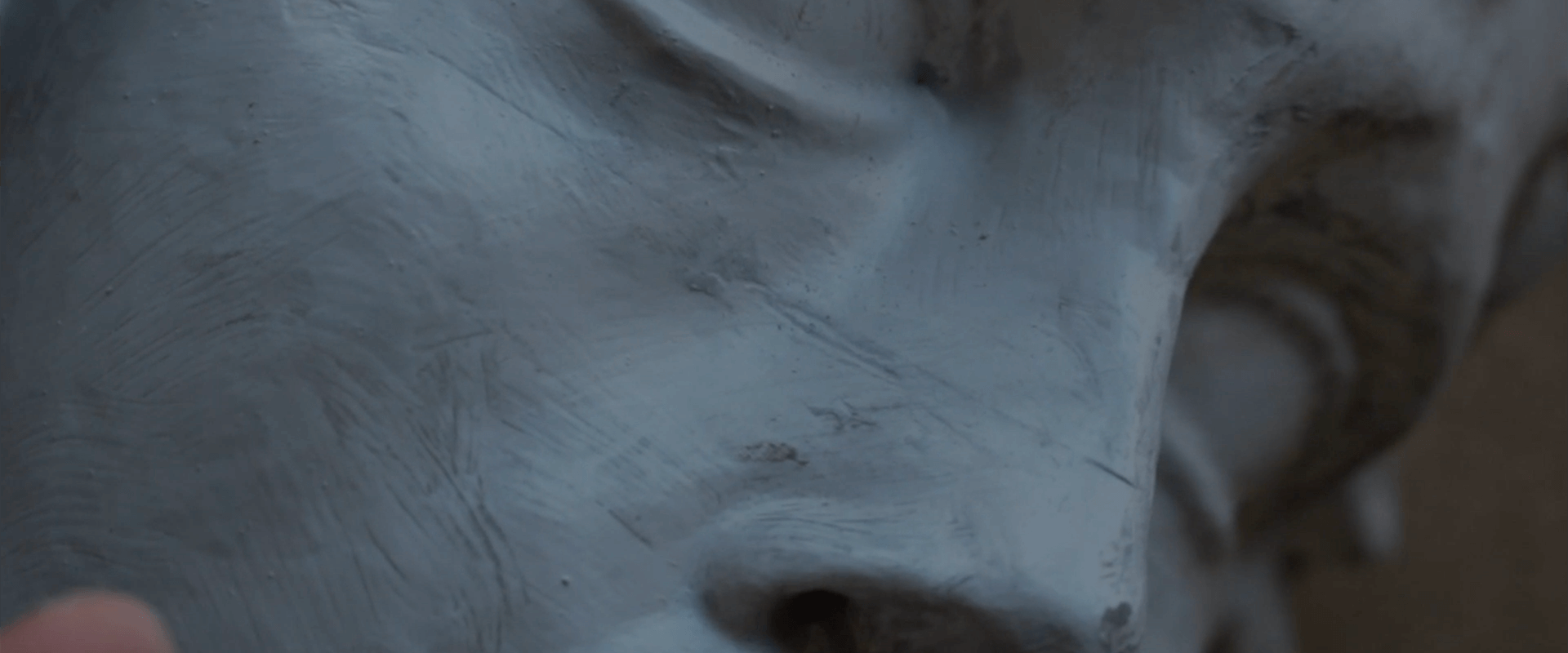Besano is a typical Northern Italian town, nested in a valley opening on charming Lake Ceresio, literally at a stone’s throw from the Swiss border. A few thousands souls, a 17th Century church with its inevitable handful of invaluable renaissance masterpieces, a football pitch, and a museum! Yes, for Besano has its own dinosaur, the Besanosaurus. It was discovered some time ago in one of the quarries dotting the surrounding mountains. Needless to say Besano is today a Unesco World Heritage site. It is also the birthplace of generations of sculptors.
Among them one Gerolamo Argenti, who sculpted some of the statues that still ornate the spires of Milan’s Duomo. He is also the author of the statue of St John the Baptist at the top of Besano’s “new” bell tower, which was added to the parish church in 1808. Standing at some 140 feet above the town, it dominates the valley, and protects it from evil, famine and especially disease.
The task of Studio Volpi
In recent years, when the municipality of Besano, together with the parish and other local stakeholders, decided to restore their bell tower, they realised that this statue, one of their most significant works of art and now in pristine conditions, was in fact inaccessible to the population, let alone to tourists! The climb up the 140 feet of the tower is indeed perilous and very, very steep. That’s when the idea of bringing the saint down to a more earthly level started to make its way in the minds of the villagers.
Gianmario Volpi, founder of the Studio and a native of Besano, volunteered our contribution to solve the unreachable statue affair. The Studio had exactly the technology that was needed, plus all the know-how to develop a strategic vision about the positioning and the branding of Besano and its valley as a splendid destination for art, history and nature lovers.
If the statue could not actually be removed from the top of the tower, a life-size, high-quality copy needed to be created. This copy could either be “physical” or “virtual”, or both. The first thing to do was to acquire a high-resolution 3D image of the statue, which could then be used in a multiplicity of ways.

The mapping of a Saint
Some physical effort was required to climb up to the top of the tower through the scaffolding surrounding it, but the reward was a breathtaking view of the valley and the nearby lake, in addition to exclusive access to St John in person.
The handheld scanner used in the Besano project was capable of recording both geometry and texture data. The statue in itself was a bit of a giant, larger than the natural size of a man for it needed to be spotted from far away, so it was decided that the scan would be acquired in several parts. First the head, then parts of the body, then the lamb in the arms of the saint, and so forth. It took some three and half hours of recording for a total 35 minutes “footage” , consisting in forty thousand frames and millions of individual dots, to map the statue.
Back to the Studio, the next step was to piece it all together thanks to the dedicated 3D imaging software, and a digital version of the statue was created, including a perfectly realistic rendering of the texture. The grain and colour of the local sandstone used by Argenti some two centuries ago was perfectly replicated, and every mark of his chisel was faithfully rendered.

First replica
Having a complete, high-quality virtual 3D model opened the way to some more ambitious projects, such as the production of a physical replica of the statue, or parts of it. As a first experiment, the head of the Saint was the object of the 3D printing job that ensued.
St John’s head was still too big for the Studio’s liquid resin 3D printer, so it was further divided into wedges. Once the individual pieces were obtained, taking around 20 hours each to print, they were quite prosaically glued together into what resembled a hollow mask. The seam was then cancelled out and the “mask” was passed on to an artist for the next phase.

From artist to technology, to artist
“Every day, we aim to exceed the concept of innovation”. These words of Gianmario Volpi describe the spirit of the Studio in taking on this challenge. One of the fascinating aspects of this specific project was the mingling of the ancient with the futuristic, of the sacred with science, and of artistic emotion with technology. The statue emerged from the past, passing from the hands of a cathedral builder to those of 3D imaging experts, and back into those of a modern artist and sculptor. This final stage was particularly important as it gave a human, emotional dimension to what was so far a simple piece of plastic. The artist added the final texture and colour to the piece, making it look exactly as the original. This took time, passion and expertise, in a way it gave it a soul. A long way beyond the simple application of innovative technology.
And for the first time in two hundred years, the people of Besano had literally come face to face with their saint.

St John the social
Today, as the first part of the Studio’s mission has been accomplished, the time has come to take the project one step further and define a strategic roadmap for the promotion of tourism in the area. The vicinity of Milan, Lugano and of the great Northern lakes is certainly an asset in attracting visitors to the valley, as is the variety of activities on offer: from visits to the local museum, churches and old quarries, to hiking and biking along the many scenic trails in the uncontaminated wilderness of the surrounding mountains. The good saint, and his physical or holographic representations, can be the starting point of a cultural, artistic and sporting journey that is truly unique and authentic.
Studio Volpi will now support the continuation of the project, offering its expertise in branding and communication, to help the Saint take his first steps on social media and stand at the centre of a truly innovative and forward-looking territorial marketing system.
In the meanwhile, he will continue to protect the valley and its inhabitants from the quiet and peaceful solitude of Besano’s bell tower.

-

-

-

Perspectives Mar 30, 2020
KITCHEN 4.0: HOW DIGITALIZATION IS CHANGING THE RULES
Technological updating and the integration of an interconnected soul are turning modern professional kitchens into a perfect example of the 4.0 industry, where the product and its super digital powers become a tool to improve working conditions, enhance productivity, monitor the processes to achieve better results and create new business models






